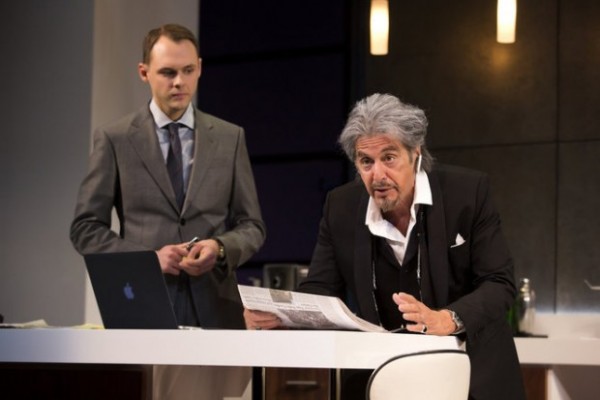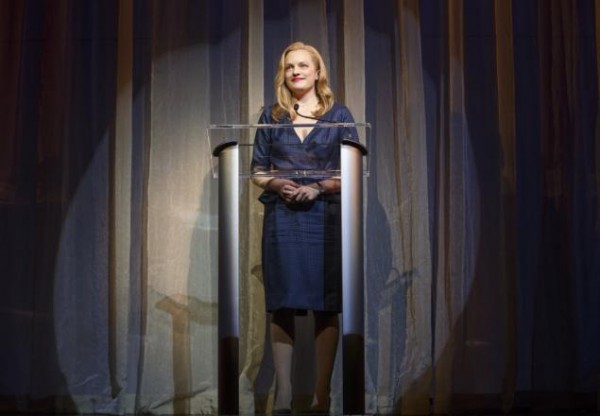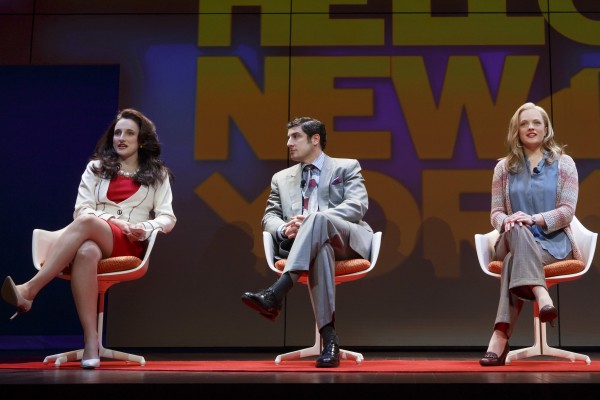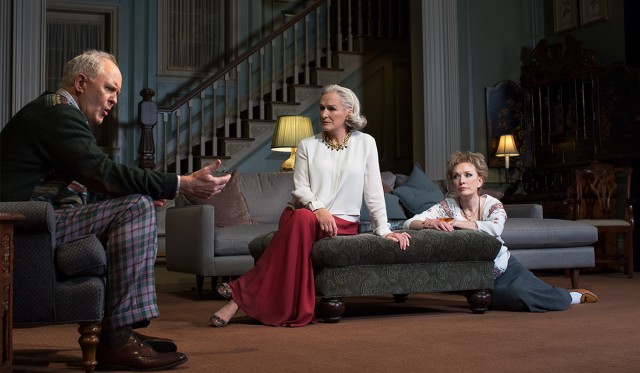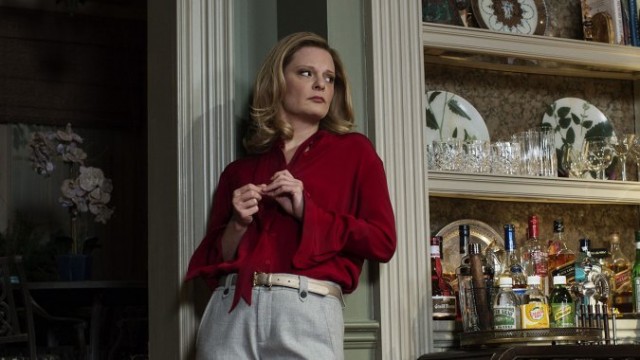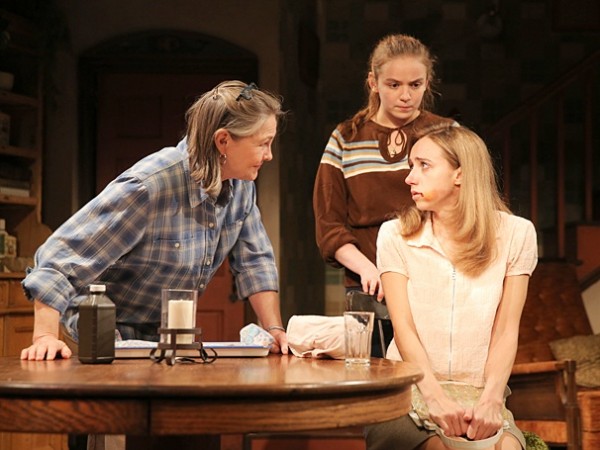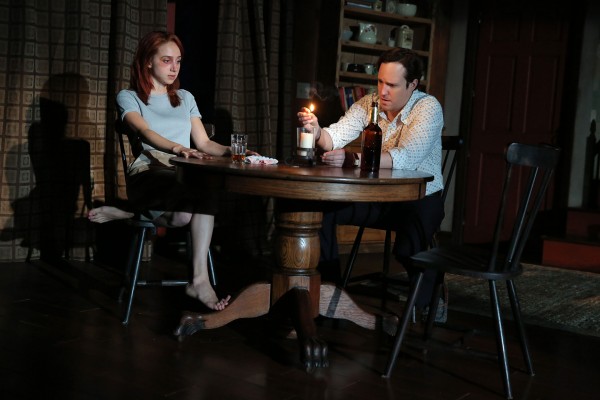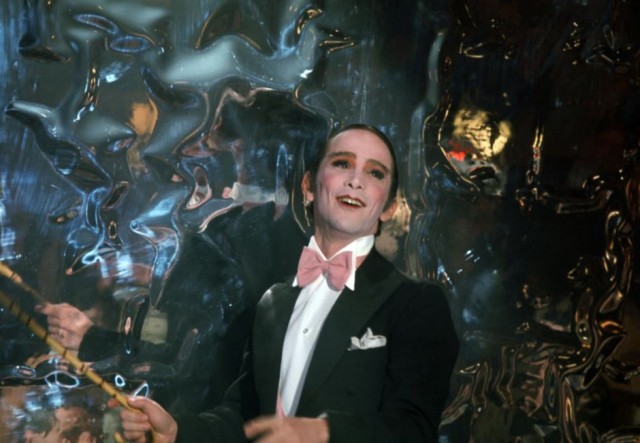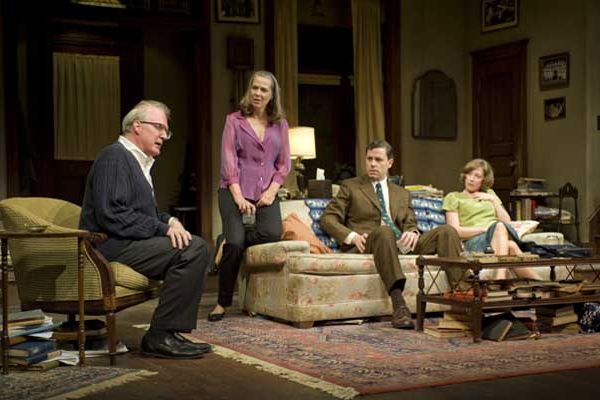
French film favorite AMÉLIE is now a musical at the Walter Kerr Theatre (photo by Joan Marcus)
Walter Kerr Theatre
219 West 48th St. between Broadway & Eighth Ave.
Tuesday – Sunday through October 1, $79-$26
www.ameliebroadway.com
Jean-Pierre Jeunet and Guillaume Laurant’s Amélie is one of the most imaginative romantic comedies of the twenty-first century, an endlessly charming and surprising tale of a lonely young woman who, after an unfortunate childhood, moves to Paris, where she tries to help make everyone around her happy. Her story is told with visual magic and a carnivalesque soundtrack that would seem to lend itself to becoming a musical. Unfortunately, despite a promising cast and crew, the Broadway adaptation that opened at the Walter Kerr Theatre last week lacks all the exuberant and mysterious joi de vivre that made the film, which received five Oscar nominations, such a critical and popular success. Tony nominee Phillipa Soo (Hamilton, Natasha, Pierre, and the Great Comet of 1812) stars as the adult Amélie Poulain, who was played with such wide-eyed wonder in the film by Audrey Tatou. (Savvy Crawford is the young Amélie.) Soo has a lovely singing voice, but the motivations for her character’s quirky, beguiling behavior are lost as she interacts with such oddballs as a blind beggar (David Andino), her cold, rigid father (Manoel Felciano), unpublished writer Hipolito (Randy Blair), café owner Suzanne (Harriet D. Foy), airline hostess Philomene (Alison Cimmet, who also plays Amélie’s mother), plumber Joseph (Paul Whitty), waitress Gina (Maria-Christina Oliveras), local grocer Collignon (Tony Sheldon) and his somewhat simple employee, Lucien (Heath Calvert), Fluffy the giant goldfish (Whitty), and a garden gnome (Andino). There’s also a rock star based on Elton John (Blair), but we’re trying to forget we ever saw that.
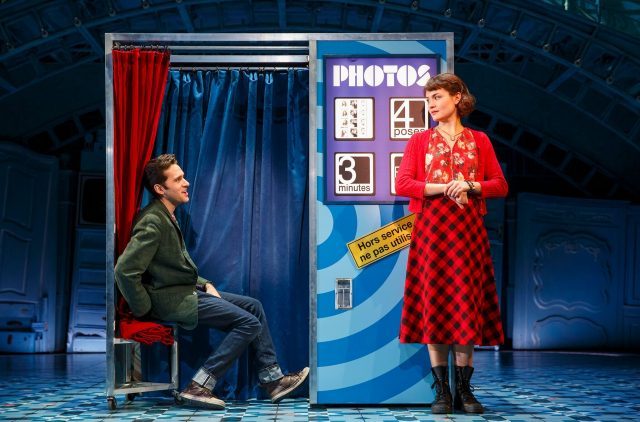
Nino (Adam Chanler-Berat) and Amélie (Phillipa Soo) meet at a photo booth in AMÉLIE (photo by Joan Marcus)
Three of the most touching parts of the film get lost in the overstaging by Tony-winning director Pam MacKinnon (Clybourne Park, An American in Paris, Prelude to a Kiss): when Amélie finds a small metal box in her apartment and tries to track down its rightful owner (Felciano); develops a friendship with the Glass Man, Dufayel (Sheldon), a brittle painter re-creating Renoir’s “Luncheon of the Boating Party”; and is enchanted by Nino (Adam Chanler-Berat), a young man who collects discarded prints from a photo booth. The songs, meanwhile, by Daniel Messé (music and lyrics) and Nathan Tysen (lyrics), along with Sam Pinkleton’s uninspired choreography and David Zinn’s confusing set, are trite and unmemorable, making the story much more kid friendly (although book writer Craig Lucas does leave in Amélie’s orgasm joke). What the production seems to miss is that Amélie is not merely an adorable gamine doing cute things but a complex character living in a complicated, broken world that she is trying to fix; unfortunately, she can’t fix the musical itself.
